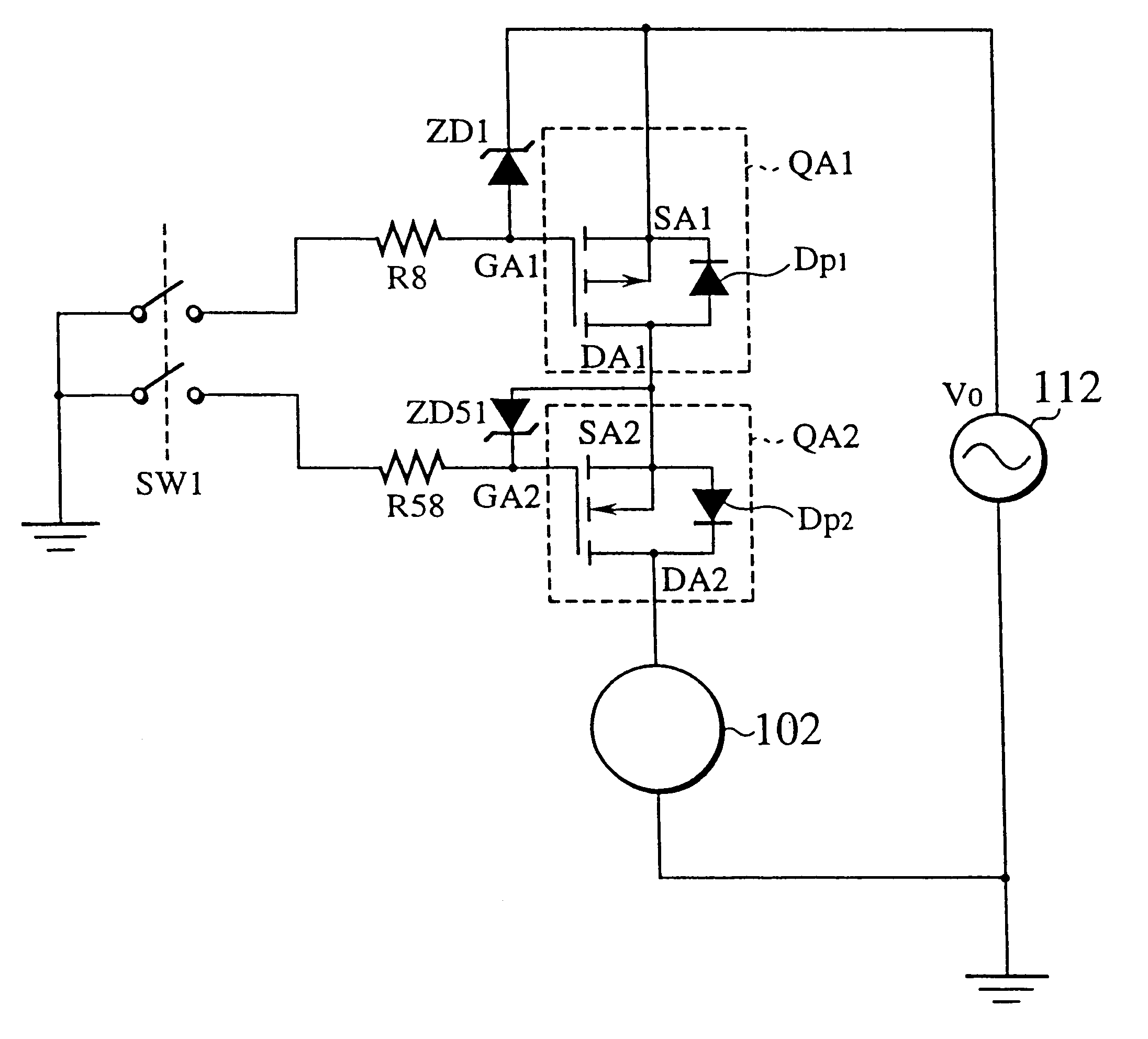Semiconductor active fuse for AC power line and bidirectional switching device for the fuse
a technology of ac power line and active fuse, which is applied in the direction of electronic switching, emergency protective arrangements for limiting excess voltage/current, and pulse techniques, etc., can solve the problems of microcomputer 903 being expensive and slow to respond to such an abnormal current, and complicated and enlarge the supply/control apparatus
- Summary
- Abstract
- Description
- Claims
- Application Information
AI Technical Summary
Benefits of technology
Problems solved by technology
Method used
Image
Examples
Embodiment Construction
)
Various modifications will become possible for those skilled in the art after receiving the teachings of the present disclosure without departing from the scope thereof. For example, FIG. 10 shows a power IC according to still another embodiment of the present invention. The power IC consists of an n-channel first main semiconductor element QA11 and an n-channel second main semiconductor element QA2. The first main semiconductor element QA11 has a first main electrode DA1 connected to an ungrounded side of an AC power source 112, a second main electrode SA1 opposing to the first main electrode DA1, and a first control electrode GA1 for controlling a main current flowing between the first and second main electrodes The second main semiconductor element QA2 has a third main electrode SA2 connected to the second main electrode SA1, a fourth main electrode DA2 opposing to the third main electrode SA2 and connected to a load, and a second control electrode GA2 for controlling a main cur...
PUM
 Login to View More
Login to View More Abstract
Description
Claims
Application Information
 Login to View More
Login to View More - R&D
- Intellectual Property
- Life Sciences
- Materials
- Tech Scout
- Unparalleled Data Quality
- Higher Quality Content
- 60% Fewer Hallucinations
Browse by: Latest US Patents, China's latest patents, Technical Efficacy Thesaurus, Application Domain, Technology Topic, Popular Technical Reports.
© 2025 PatSnap. All rights reserved.Legal|Privacy policy|Modern Slavery Act Transparency Statement|Sitemap|About US| Contact US: help@patsnap.com



